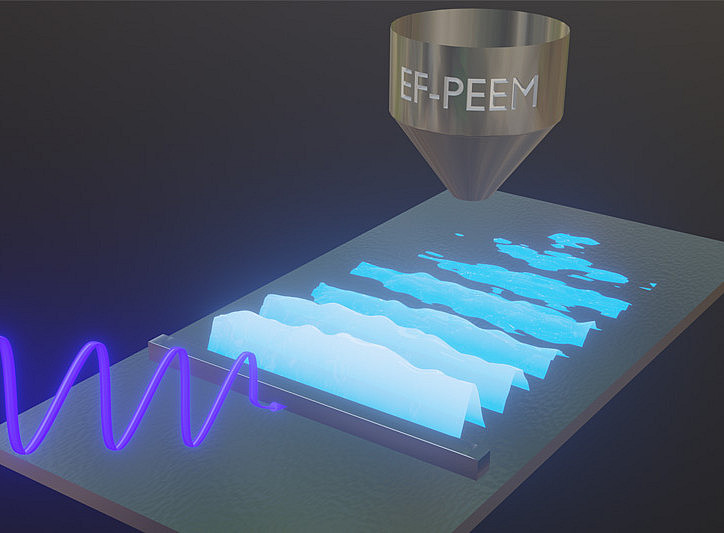Surface plasmons are electron density waves that propagate along metal surfaces. The associated electromagnetic fields are concentrated on the surface and correspond to a quasi-two-dimensional light wave. In recent years, this phenomenon has not only caused quite a stir in the laboratory, but it has also found its way into applications, for example in highly sensitive biosensor technology.
Plasmons on gold and silver surfaces, where they can be excited in the visible and infrared spectral range, are well explored. The blue and ultraviolet spectral range, on the other hand, is not accessible with these metals due to their spectrally selective damping properties. Therefore, in a cooperation between the Nanooptics lab at the University of Graz and the Institute for Experimental Physics at the Technical University of Graz aluminum was chosen – a metal with low attenuation in the blue and ultraviolet. On one hand, the lithographic fabrication of nanostructures on an aluminum surface enabled a high degree of control over the excitation of surface plasmons. On the other hand, plasmon propagation was imaged via the resulting interference patterns with a photoelectron-electron microscope (NanoESCA, a NAWI Graz Core Facility).
This not only enabled a precise view of the short-wave spectral range, which has been little explored for plasmons. The unexpectedly high measured plasmonic propagation length of up to 8.4 µm was also quite surprising. In any case, the characterization of surface plasmons on aluminum enables their further application in the short-wave optical domain, for example for plasmon-induced chemical processes.
T. Jauk, H. Ditlbacher, F. Lackner, W. E. Ernst, A. Hohenau, J. R. Krenn
Photoemission electron microscopy of blue and UV surface plasmons on nanostructured aluminum films
Plasmonics (2023), DOI 10.1007/s11468-023-01967-x
